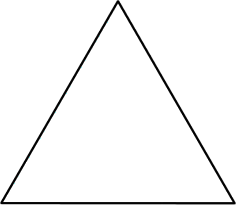Language is Important in Direction
The room is made i.^ up of four curtains, used to create four walls in a rectangle, defined by two types of information: geometric (two short walls and two long walls) and color information (one red wall).
Now, think about the corners. If you are using only geometric information, pairs of corners are identical. There are two corners with a short wall on the ft and a long wall on the right, and two corners the other way around. If you are using only color information, there are also two pairs of identical corners: corners next to a red wall and corners not next to a red wall.
Using just one kind of information, geometry or color, lets you identify corners with only 50% accuracy. But using both kinds of information in combi¬ nation lets you identify any of the four corners with 100% accuracy, because although both kinds of information are ambiguous, they are not ambiguous in the same way.
So, here's a test to see if people can use both kinds of information in combination.5 Show a person something he'd like, such as some food, and let him see you hide it behind the curtains in one corner of the room. Now disorient him by spinning him around, and ask him to find the food. If he can combine the geometric and the color information, he'll have no problem finding the food—he'll be able to tell unambiguously in which corner it was hidden. If he doesn't combine information across modules, he will get it right 50% of the time, and he will get it wrong 50% of the time on his first guess and need a second guess to find the food.
Where does language come into it? Well, language seems to define the kinds of subjects who can do this task at better than 50% accuracy. Rats can't do it. Children who don't have language yet can't do it. Postlinguistic children and adults can do it.
Convinced? Here's the rub: if you tie up an adult's language ability, her per¬ formance drops to close to 50%. This is what Linda Hermer-Vazquez, Eliza¬ beth Spelke, and Alia Katsnelson did.6 They got subjects to do the experiment, but all the time they were doing it, they were asked to repeat the text of newspaper articles that were played to them over loudspeakers. This "verbal shadowing task" completely engaged their language ability, removing their inner monologue.
The same subjects could orient themselves and find the correct corner fine when they weren't doing the task. They could do it when they were doing an equivalently difficult task that didn't tie up their language ability (copying a sequence of rhythms by clapping). But they couldn't do it with their language resources engaged in something else. There's something special about mguage that is essential for reorienting yourself using both kinds of information available in the room.
Notes:
Deprived of the language centers of the brain, subjects are unable to determine their location in a test.
Folksonomies: language orientation direction
Taxonomies:
/education/language learning (0.538661)
/style and fashion/accessories/socks (0.503063)
/family and parenting/children (0.447124)
Keywords:
information (0.929375 (positive:0.308194)), red wall (0.874643 (negative:-0.245171)), corners (0.845272 (positive:0.156494)), language ability (0.754999 (neutral:0.000000)), equivalently difficult task (0.617158 (neutral:0.000000)), Alia Katsnelson did.6 (0.608793 (neutral:0.000000)), verbal shadowing task (0.598857 (neutral:0.000000)), Eliza¬ beth Spelke (0.597249 (neutral:0.000000)), identical corners (0.588082 (neutral:0.000000)), color information (0.578028 (positive:0.207225)), correct corner fine (0.553074 (neutral:0.000000)), kinds (0.464697 (positive:0.352115)), language centers (0.423194 (neutral:0.000000)), geometric information (0.412949 (neutral:0.000000)), short walls (0.405640 (neutral:0.000000)), long walls (0.405416 (neutral:0.000000)), combi¬ nation (0.392920 (positive:0.569563)), per¬ formance (0.387369 (neutral:0.000000)), short wall (0.373042 (neutral:0.000000)), long wall (0.372687 (neutral:0.000000)), language resources (0.372634 (negative:-0.250569)), Postlinguistic children (0.366528 (neutral:0.000000)), newspaper articles (0.363592 (neutral:0.000000)), inner monologue (0.362018 (neutral:0.000000)), Linda Hermer-Vazquez (0.360435 (positive:0.258745)), subjects (0.332981 (negative:-0.203153)), accuracy (0.294718 (positive:0.388748)), room (0.286550 (positive:0.638357)), food (0.268213 (negative:-0.364365)), time (0.255899 (negative:-0.364365))
Entities:
Alia Katsnelson:Person (0.987328 (neutral:0.000000)), Linda Hermer-Vazquez:Person (0.940457 (positive:0.258745)), beth Spelke:Person (0.923259 (neutral:0.000000)), 50%:Quantity (0.923259 (neutral:0.000000)), 100%:Quantity (0.923259 (neutral:0.000000))
Concepts:
Apostrophe (0.941002): dbpedia | freebase





